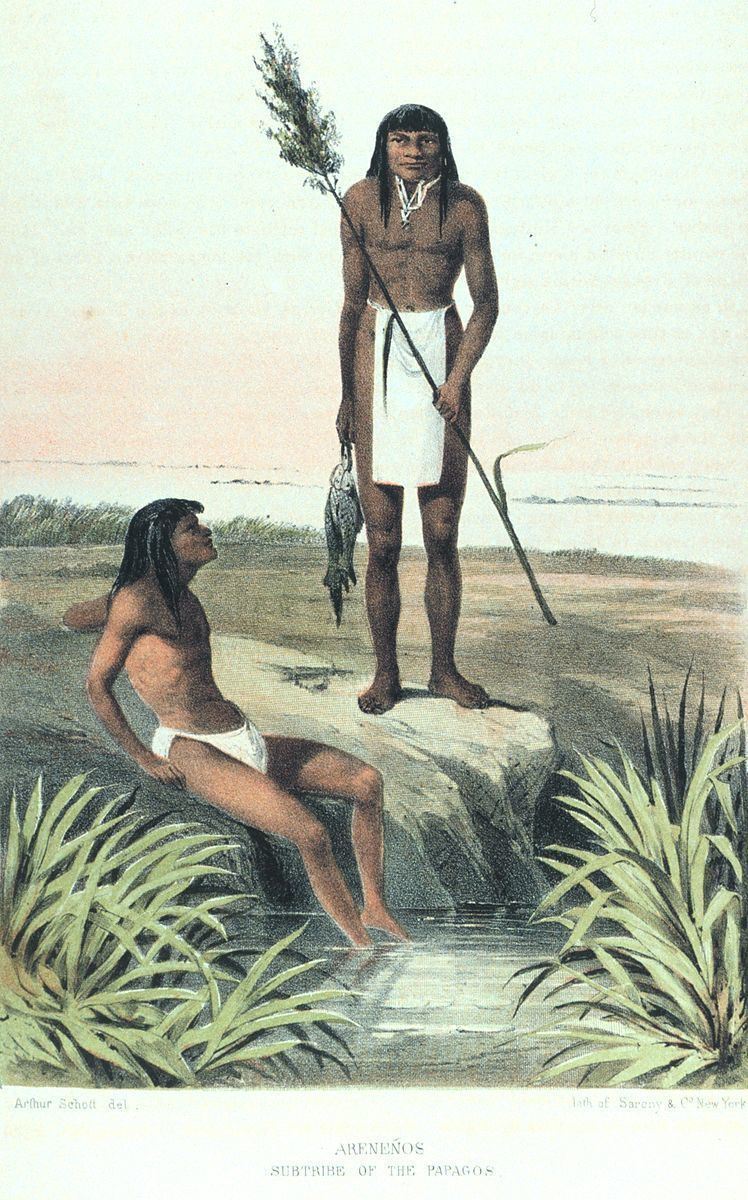 | ||
The Hia C-eḍ O'odham ("Sand Dune People"), also known as Areneños or Sand Papagos are a Native American peoples whose traditional homeland lies between the Ajo Range, the Gila River, the Colorado River, and the Gulf of California. They are currently unrecognized at both the state and federal level in the United States and Mexico, although the Tohono O'odham Nation has a committee for issues related to them and has land held in trust for them. They are represented by a community organization known as the Hia-Ced O'odham Alliance. The Hia C-eḍ O'odham are no longer nomadic, and the majority today live in or near Ajo, Arizona, or the small settlements of Blaisdell and Dome near Yuma.
Contents
They have often been considered a "Papago subtribe" by anthropologists, along with the Tohono O'odham and several groups that vanished or merged with the Tohono O'odham. Anybody who can prove Hia C-eḍ O'odham ancestry meeting Tohono O'odham Nation blood quantum can apply for membership in the Tohono O'odham Nation. Some Hia Ced O'odham people are enrolled in the Ak-Chin Indian Community.
On February 24, 2009, 642.27 acres of land near Why, Arizona, which were previously purchased by the Tohono O'odham Nation, were acquired in trust for the Nation. This was done with the intention of eventually creating a new district of the Tohono O'odham Nation for the Hia C-eḍ O'odham. On October 30, 2012, a new tribal law went into effect creating the "Hia-Ced District" as the new 12th district of the Tohono O'odham nation, with the trust land near Why as its initial land base. For three years after the effective date, previously enrolled members of the Tohono O'odham Nation have the right to request that their district designation be reassigned to the new district. People applying for tribal enrollment may also request the Hia-Ced District as their district designation.
Culture
Due to geographical proximity, certain cultural traits were borrowed from the Yuman peoples, with some sources implying that their culture was more Yuman than it was Piman, with the exception of their language. According to historical sources, the Hia C-eḍ O'odham were friendly with the Cocopah, the Quechan, and the Halchidhoma.
Gastronomy
The Hia C-eḍ O'odham were traditionally hunters and gatherers. They caught jackrabbits by chasing them down in the sand. They hunted mountain sheep, mule deer, and pronghorn with bows and arrows. They caught muskrats and lizards as well. During certain seasons, they went to the gulf to fish and obtain salt.
They also ate Pholisma sonorae, an edible flower stalk called camote and "sand found" found in the sand dunes, mesquite beans, saguaro fruit, and pitaya, which they gathered near Quitobaquito and the Lower Sonoita River.
